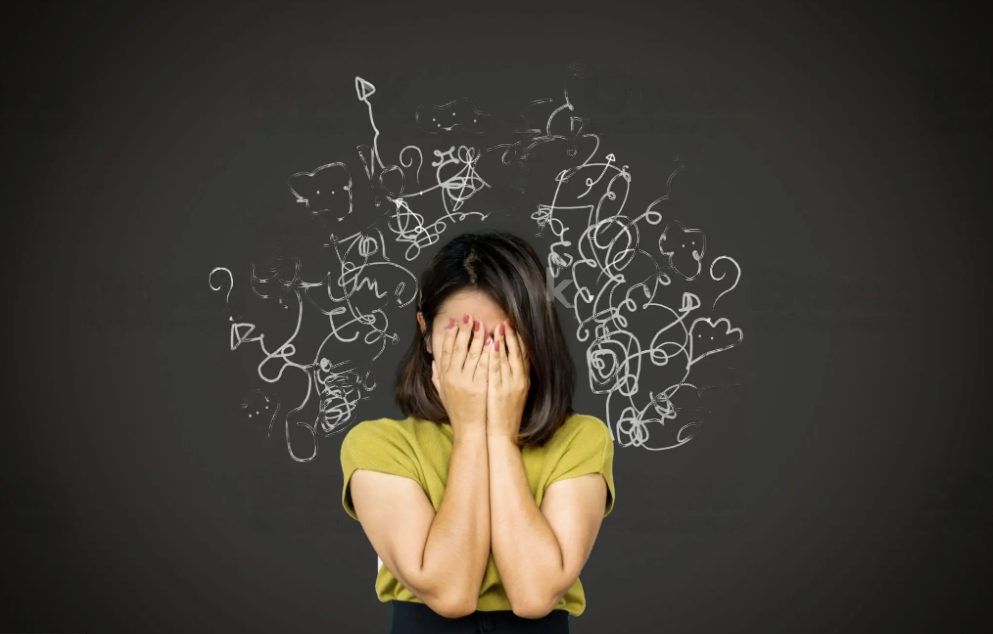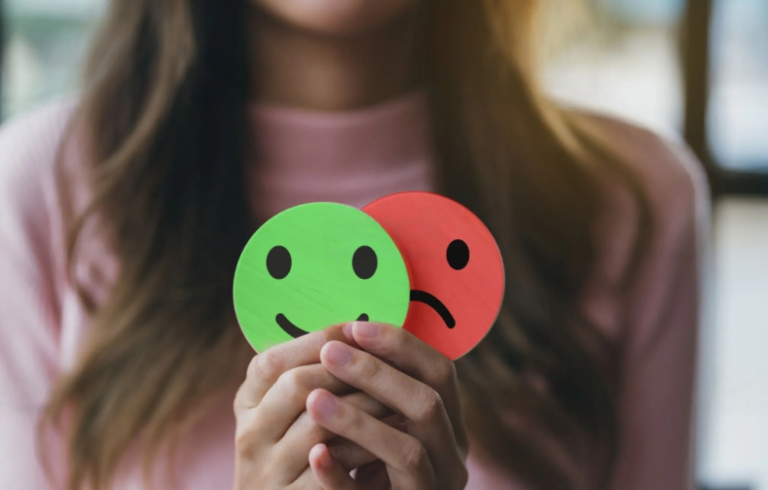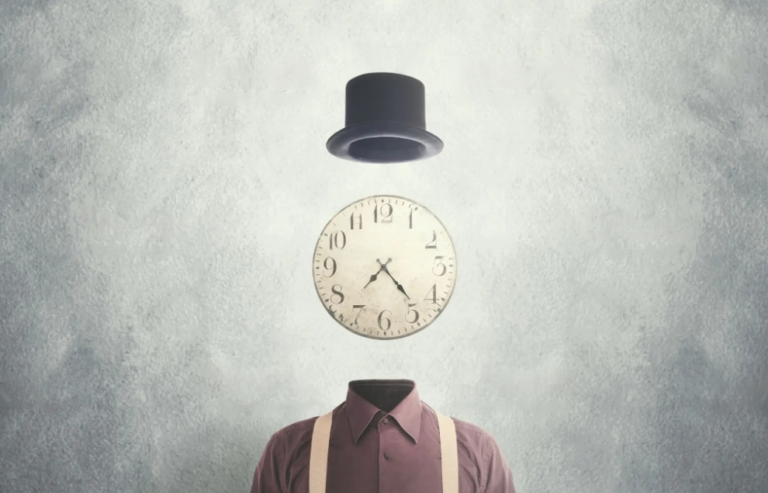Recognizing the Symptoms of Panic Attack: How to Identify and Cope with this Distressing Condition
Recognizing the Symptoms of Panic Attack: How to Identify and Cope with this Distressing Condition
Panic attacks and their prevalence
Panic attacks are sudden and intense episodes of fear and anxiety that can profoundly impact an individual’s well-being. These episodes are characterized by overwhelming feelings of distress, accompanied by various physical and psychological symptoms. Panic attacks can occur unexpectedly and reach their peak within a few minutes, leaving individuals feeling frightened and vulnerable.
The prevalence of panic attacks is significant, with research indicating that approximately 2-3% of the population experiences them at some point. These statistics highlight the importance of understanding and addressing panic attacks as a prevalent mental health concern.
Importance of recognizing the symptoms of a panic attack
Recognizing panic attack symptoms is crucial for several reasons. Firstly, it allows individuals to accurately identify and differentiate panic attacks from other medical conditions. For example, chest pain, heart palpitations, shortness of breath, dizziness, and trembling are common during a panic attack. By recognizing these unique symptoms, individuals can seek appropriate support and avoid unnecessary medical interventions.
Additionally, recognizing the symptoms of a panic attack is essential for diagnosing panic disorder. Panic disorder is an anxiety disorder characterized by recurrent and unexpected panic attacks. It can significantly impact a person’s daily life, leading to increased anxiety, avoidance behaviours, and reduced quality of life. By identifying the symptoms, individuals can seek professional help, receive an accurate diagnosis, and access suitable treatment options to manage their condition effectively.
Promoting awareness about panic attacks and their symptoms is crucial in mental health. Organizations like the Anxiety and Depression Association and the National Institute of Mental Health are vital in educating the public about panic attacks and panic disorder. In addition, they provide valuable resources, support, and information to individuals experiencing panic attacks or seeking to understand them better.
Understanding the prevalence of panic attacks and recognizing their symptoms is paramount in supporting individuals’ mental health. By increasing awareness and promoting early recognition, we can ensure that appropriate help and resources are available to those who need them, fostering a more compassionate and supportive society.

What are the Symptoms of Panic Attack?
Panic attacks can manifest through a range of physical and psychological symptoms that can be distressing and overwhelming for individuals experiencing them. Understanding these symptoms is crucial for recognizing and effectively managing panic attacks.
Physical symptoms
During a panic attack, individuals may experience a wide range of physical symptoms that can be incredibly distressing. These symptoms often mimic a heart attack, leading to heightened anxiety and fear. Common physical signs of a panic attack include:
- Racing heartbeat
- Chest pain or tightness
- Difficulty breathing
- Dizziness
- Sweating
- Trembling or shaking
- A choking feeling
- Sense of losing control
- Hot flashes
It is important to note that while these physical symptoms can be incredibly intense, they are not life-threatening.
Understanding the physical symptoms of a panic attack is crucial for differentiating it from other medical conditions, such as a heart attack. Panic disorder, the recurring occurrence of panic attacks, can significantly impair daily life. Recognizing the symptoms of panic disorder, including the physical symptoms, is the first step toward seeking appropriate help and treatment.
Psychological symptoms
Psychological symptoms accompany the physical manifestations during a panic attack, creating a distressing experience for individuals. These symptoms often arise abruptly and are characterized by the following:
- Overwhelming anxiety
- Intense fear
- A feeling of impending doom
Individuals may also experience intense worry about losing control or going crazy. The psychological symptoms of a panic attack can be just as debilitating as the physical ones.
It is important to note that while panic attacks are distressing on their own, severe and repeated panic attacks can develop panic disorder. This condition involves experiencing recurrent panic attacks and constantly fearing another episode. The psychological symptoms associated with panic disorder can significantly impact an individual’s everyday life, causing avoidance behaviors and interfering with work, relationships, and overall well-being.
Various factors can trigger panic attacks, including stressful situations, certain phobias, or other underlying anxiety disorders. Understanding the psychological symptoms of panic attacks can help individuals recognize when they are experiencing an episode and seek medical help. Mental health conditions, such as anxiety disorders, are treatable, and practical strategies and therapies are available to manage and alleviate the intense fear and anxiety associated with panic attacks.
Explanation of fight or flight response
The fight or flight is a natural and instinctive reaction during a panic attack. When faced with a perceived threat or danger, our body prepares to confront it head-on or flee. This response is triggered by the activation of the sympathetic nervous system, resulting in various physiological changes.
When experiencing sudden attacks, the fight or flight response can be activated even when no immediate threat is present. This leads to intense physical sensations such as rapid heartbeat, shortness of breath, sweating, trembling, and a feeling of impending doom. These sensations can be overwhelming and frightening, contributing to the anxiety and fear experienced during a panic attack.
The fight or flight response can help manage and to prevent panic attacks. By recognizing the body’s natural response to perceived threats, individuals can employ relaxation techniques and breathing exercises to counteract physiological arousal. Deep breathing, progressive muscle relaxation, and mindfulness practices effectively activate the body’s relaxation response and calm the heightened state of anxiety.
Identifying and managing triggers that can provoke panic attacks is also crucial. By identifying specific situations, thoughts, or experiences that tend to trigger panic attacks, individuals can develop strategies to cope with or avoid these triggers, reducing the likelihood of more panic attacks.
How to Identify Symptoms of Panic Attack
Understanding the triggers
Understanding the triggers of panic attacks is crucial for individuals with panic disorder or those experiencing symptoms panic attacks. By identifying the triggers, one can gain insight into the specific factors that contribute to the onset of panic symptoms and work towards managing or preventing future episodes.
Triggers for panic attacks can vary widely among individuals. Symptoms of a panic attack may include specific situations, thoughts, memories, or physical sensations. Some people with panic disorder may find certain places or activities as triggers, while others may be more sensitive to internal thoughts and bodily sensations.
Recognizing these triggers allows individuals to develop effective coping mechanisms tailored to their needs. It may involve learning relaxation techniques, such as deep breathing exercises or mindfulness meditation, to help manage stress and anxiety. Seeking professional help from a therapist or counsellor can also provide valuable support and guidance in understanding and addressing the triggers.
Tracking and monitoring the symptoms
Panic attacks are sudden and intense waves of fear that can cause various physical symptoms, such as a racing heart, shortness of breath, sweating, trembling, and dizziness. It can also be very frightening and make people feel like they are going to die or lose control. Recurrent panic attacks are a defining characteristic of panic disorder, a mental health condition that warrants attention and understanding. People with panic disorder may also worry about having another panic attack, which can lead to avoidance of certain situations or activities.
There are many ways to track and monitor the symptoms of panic attacks. One way is to keep a journal of your symptoms. This can help you to identify patterns in your symptoms and to track your progress over time. You can also use a panic attack-tracking app. These apps can help you track your symptoms, thoughts and feelings, and coping strategies.
Tracking and monitoring your symptoms can be helpful in several ways. It can help you to:
- Identify your triggers
- Learn to manage your symptoms
- Track your progress over time
- Communicate with your doctor
When faced with panic attacks, it is crucial to reach out for professional assistance to receive the support you need. A therapist can help you to understand your panic attacks and to develop coping strategies. Medication can also help manage the symptoms of panic disorder. It is also important to remember that you are not alone. Panic attacks are a common mental health condition. Millions of people around the world experience panic attacks. With the proper treatment, you can learn to manage your panic attacks and live a full and productive life.
Here are some additional tips for tracking and monitoring the symptoms of panic attacks:
- Be specific about your symptoms. Don’t just say, “I feel anxious.” Instead, say, “I felt my heart racing and my palms sweating.”
- Note the time of day and the situation when you had your panic attack. This can help you to identify your triggers.
- Keep track of your thoughts and feelings during and after your panic attack. This can help you to identify your triggers and to develop coping strategies.
- Share your journal or app with your therapist or doctor. This can help them to understand your panic attacks and to develop a treatment plan that is right for you.
Tracking and monitoring your symptoms can be a helpful way to manage your panic attacks. You can learn to cope with your symptoms and triggers more effectively by being aware of them.
Seek medical help
Experiencing a panic attack can be an overwhelming and frightening ordeal, but seeking medical help is crucial to understanding and managing this condition. If you frequently suffer from most panic attacks, reaching out to a mental health professional for guidance and support is essential.
A mental health professional, such as a psychiatrist or psychologist, can accurately diagnose based on your panic disorder symptoms. They will conduct a comprehensive evaluation to assess the frequency and severity of your panic attacks and any associated symptoms. With this information, they can develop a personalized treatment plan tailored to your needs.
In addition to medication, therapy is a vital component of treatment for panic attacks. Cognitive-behavioral therapy (CBT) is an evidence-based approach that helps you identify and challenge negative thought patterns and develop effective coping strategies. By working with a mental health professional, you can gain insights into the triggers and underlying causes of your panic attacks and learn techniques to manage anxiety more effectively.
Coping Strategies for Symptoms of Panic Attack
Breathing exercises
During a panic attack, it’s common to experience rapid and shallow breathing, which can exacerbate fear and discomfort. Engaging in deep breathing exercises can help regulate your breathing pattern and promote a sense of calm. For example, take slow, deep breaths through your nose, allowing your abdomen to rise, and then exhale slowly through your mouth. Focusing on your breath can reduce the physical sensations associated with panic attacks.
Research suggests that incorporating breathing exercises into your coping routine can be beneficial for panic attacks and managing other mental health conditions. This technique helps activate the body’s relaxation response and counteracts the physiological changes triggered by panic disorder.
Remember, while breathing exercises can provide immediate relief, they are just one aspect of managing panic attack symptoms. It’s essential to seek professional help to address the underlying causes and develop a comprehensive treatment plan tailored to your needs. A medical condition, such as panic disorder, warrants a thorough evaluation by a healthcare professional who can guide you in managing your symptoms and improving your overall well-being.
Mindfulness and relaxation techniques
Practicing mindfulness entails directing your focus to the present moment with an open and non-judgmental attitude. By directing your focus to your immediate sensations, thoughts, and emotions during a panic attack, you can better understand and accept your experience. This non-judgmental awareness helps break the cycle of fear that often accompanies panic attacks.
Relaxation techniques, such as deep breathing exercises, progressive muscle relaxation, and guided imagery, can also provide significant relief. By consciously engaging in these practices, you activate your body’s relaxation response, counteracting the physiological changes contributing to panic attacks.
While coping with panic attacks, it’s important to remember that seeking professional help is crucial, especially if the symptoms persist or are triggered by a traumatic event. A comprehensive approach, combining mindfulness techniques with therapy or medication, can help you address the underlying causes of panic disorder and foster long-term well-being. Remember, you are not alone, and with the right support, you can effectively manage panic attacks and lead a fulfilling life.
Cognitive-behavioral therapy
Cognitive-behavioral therapy (CBT) is a highly effective and evidence-based approach for treating panic disorder and managing panic attacks. This therapeutic technique focuses on identifying and modifying negative thought patterns and behaviors that intensify panic attacks.
CBT also incorporates exposure therapy, which involves gradually and safely exposing individuals to the situations or triggers that typically provoke panic attacks. By slowly facing their fears and learning coping mechanisms, individuals can gain control and reduce the likelihood of future panic attacks.
Talk therapy, a fundamental component of CBT, provides a supportive and non-judgmental space for individuals to express their emotions and fears related to panic attacks. In addition, it helps individuals understand the root causes of their anxiety and develop healthy coping strategies.
If you or someone you know is struggling with panic attacks, consider seeking the support of a qualified therapist who specializes in cognitive-behavioral therapy. Remember, hope and help are available to overcome panic disorder and lead a fulfilling life.
Medication options
Medication can be an important tool in managing symptoms and improving overall well-being when coping with panic attacks. If you develop panic disorder or have a family history of panic attacks, your healthcare provider may consider medication as part of your treatment plan.
Several medication options are available to help alleviate the symptoms of panic attacks. Antidepressants, such as selective serotonin reuptake inhibitors (SSRIs) and serotonin-norepinephrine reuptake inhibitors (SNRIs), are commonly prescribed to reduce anxiety and prevent future panic attacks. These medications work by regulating brain chemicals that influence mood and anxiety.
It’s important to involve your healthcare provider in decision-making when considering medication for panic attacks. They can evaluate your needs, consider any family history, and discuss potential benefits and risks. Additionally, they can monitor your progress and make any necessary adjustments to your medication regimen.
Lifestyle Changes to Reduce Symptoms of Panic Attack
Regular exercise
Incorporating regular exercise into your lifestyle can be beneficial in reducing the symptoms of panic attacks and managing panic disorder. Engaging in physical activity helps release endorphins, which promote feelings of well-being and reduce stress. Additionally, exercise can provide a healthy outlet for anxiety and tension.
Before starting any exercise program, it is advisable to consult with a healthcare professional, especially if you have any underlying medical conditions. They can assess your physical health through a physical exam and guide you on the most suitable exercise routine.
Lifestyle changes alone may not fully treat panic disorder, but they can complement other therapeutic approaches. Stay consistent with your exercise routine and be patient with yourself as you navigate your journey towards improved well-being.
Healthy Diet
Maintaining a healthy diet is essential in reducing the symptoms of panic attacks and managing panic disorder. In addition, the food we consume can impact our overall well-being and emotional state. Incorporating nutrient-rich foods into your diet, such as fruits, vegetables, whole grains, lean proteins, and healthy fats, can nourish your body and mind.
Avoiding or limiting the intake of stimulants like caffeine and alcohol is also recommended, as they can trigger or worsen panic attacks. Remember to stay hydrated by drinking plenty of water throughout the day. A balanced and nutritious diet supports physical health and contributes to a stable mood and emotional resilience.
If you have specific dietary concerns or require personalized guidance, consulting with a healthcare professional or a registered dietitian can be helpful. Adopting a healthy diet with other treatment approaches can play a significant role in managing panic disorder and improving overall well-being.
Stress management techniques
Incorporating stress management techniques into your lifestyle can significantly reduce the symptoms of panic attacks and manage panic disorder. Unfortunately, chronic stress can exacerbate anxiety and makes panic attacks worse, so it’s crucial to develop effective strategies for stress reduction.
Engaging in activities that promote relaxation, such as deep breathing exercises, meditation, yoga, or tai chi, can help calm the mind and alleviate the fear that often overwhelms during panic attacks. Regularly practicing these techniques can also improve your resilience to stress, making you better equipped to cope with future episodes.
Additionally, finding healthy outlets for stress, such as engaging in hobbies, spending time in nature, or connecting with loved ones, can further support your well-being and contribute to a more balanced and fulfilling life. Remember, while lifestyle changes are helpful, it’s crucial to seek professional treatment if you have persistent or severe symptoms.
Importance of sleep
Getting enough sleep plays a crucial role in managing and reducing the symptoms of panic attacks and treating panic disorder. Conversely, lack of sleep can exacerbate anxiety and make panic attacks more likely. Therefore, it’s important to prioritize a consistent sleep schedule and create a conducive sleep environment to ensure restful and uninterrupted sleep.
Establishing a relaxing bedtime routine, avoiding stimulating activities before bed, and creating a comfortable sleep environment can improve sleep quality. Adequate sleep helps regulate emotions, reduces stress, and enhances overall well-being, making it essential to managing panic attacks and panic disorder.
If you’re experiencing difficulty sleeping, it’s essential to consult with a healthcare professional to address any underlying sleep disorders or explore strategies to improve sleep hygiene. Remember, a good night’s sleep can significantly improve your overall mental and emotional health.
Conclusion
In conclusion, recognizing the symptoms of a panic attack is crucial for accurately identifying and differentiating this distressing condition from other medical conditions, as well as for diagnosing panic disorder. The prevalence of panic attacks highlights the importance of promoting awareness and understanding of mental health. By increasing awareness and early recognition, we can ensure that individuals receive appropriate support and access to resources for managing panic attacks and panic disorders. Understanding the fight or flight response, identifying triggers, tracking symptoms, and seeking professional help are essential steps toward effectively coping with and managing the symptoms of panic attacks. With the right treatment and support, individuals can learn to manage their panic attacks and live a fulfilling life.
FAQs
1. What happens after a panic attack?
After a panic attack, individuals may feel exhausted and emotionally drained. It takes time for the body to return to a calmer state.
2. How long can panic attack symptoms last?
Panic attack symptoms typically last for a few minutes, but they can vary in duration. Most panic attacks resolve within 20-30 minutes.
3. Why do panic attacks happen out of the blue?
Panic attacks can happen out of the blue due to an overactive fight or flight response. It can be triggered by stress, anxiety, phobias, or even occur without an apparent cause.
4. What to do when experiencing panic attack symptoms?
When experiencing panic attack symptoms, it’s important to focus on deep breathing and relaxation techniques. Remove yourself from triggering situations, practice grounding exercises, and consider seeking professional help.
5. Wan you faint from panic attack?
While it is rare to faint during a panic attack, some individuals may experience a brief loss of consciousness due to hyperventilation and decreased blood flow. However, most panic attacks do not result in fainting.
References
Panic Attacks & Panic Disorder. (2023, February 12). Cleveland Clinic. https://my.clevelandclinic.org/health/diseases/4451-panic-attack-panic-disorder
Lawson, K. (2013). What Lifestyle Changes are Recommended for Anxiety and Depression? | Taking Charge of Your Health & Wellbeing. Taking Charge of Your Health & Wellbeing. https://www.takingcharge.csh.umn.edu/what-lifestyle-changes-are-recommended-anxiety-and-depression
R, M. (2018, August 3). What It’s Like to Have an Anxiety or Panic Attack. EverydayHealth.com. https://www.everydayhealth.com/conditions/what-its-like-to-have-an-anxiety-attack/
National Institute of Mental Health. (2016). Panic Disorder: When Fear Overwhelms. Www.nimh.nih.gov. https://www.nimh.nih.gov/health/publications/panic-disorder-when-fear-overwhelms
Gotter, A. (2018). 11 Ways to Stop a Panic Attack. Healthline. https://www.healthline.com/health/how-to-stop-a-panic-attack
panic attack vs anxiety attack how to cure panic attacks fast what causes panic attacks how to stop a panic attack panic attack treatment at home







